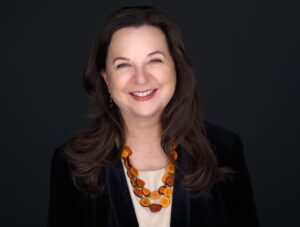Social media channels are facing increased scrutiny for potentially serving as platforms for users to make threatening posts with minimal backlash—making it difficult to distinguish between banter and legitimate threats. Institutions, including Oklahoma Christian University, are making social media awareness an increasingly important aspect of maintaining security and safety on campus.
After details emerged about threatening social media posts from the Parkland, FL high school shooter prior to the attack, USA Today reported students had noticed threatening posts from the attacker in the past. The article said the individual had previously posted pictures to Instagram posing with guns and killing animals.
In the days following the Florida shooting, CNN reported individuals made dozens of threats involving violence against schools, some of which they posted to social media sites including Instagram and Snapchat.
NBC News reported a county sheriff in Parkland, FL hopes to expand Florida’s Baker Act, which would allow police officers to detain an individual who appears to be a threat for up to 72 hours. The same article said the sheriff wants graphic or horrific social media posts to qualify as reason to detain an individual.
Oklahoma Christian Chief of Police Greg Giltner said he, as well as other campus police officers, maintains a presence on multiple social media platforms. He said the department relies on both their own social media accounts and information from faculty and staff on campus, to stay aware of information students post to social media.
“When we see something that would be a red flag—something that would be a concern—either [the other officer] or I pick it up from something on Facebook, or something on social media or one of the faculty staff members will bring it to our attention,” Giltner said. “I’ll be really honest with you. With the social media stuff, we really don’t have to look at it. It comes to us. They have no problem posting stuff.”
Visiting Instructor of English Hannah Bingham Brunner said she is active on social media platforms but does not typically connect with students through those sites. She said the only platform where she sees posts from students is through her professional Twitter page. Brunner said she tries not to see much of what her students post, because she does not want to invade their privacy.
“From the faculty side, it’s kind of a fine line,” Brunner said. “We do want to see if someone is going to come do something or if there’s something that’s been going on that people are getting upset about. We more hear what’s going on in class or hear what someone tells us in the classroom or during office hours.”
Giltner said he has been in law enforcement for 30 years now and the problems with social media are only recently an issue of concern. He said previously, issues of bullying were easily dealt with blatantly and in person, but since the rise of social media, comments and statements reach further and do more damage, because they require no accountability.
“There’s some good things about the social media aspect of it,” Giltner said. “It’s much easier for us to notify something on campus that’s going on—much quicker than it would’ve been in years past. The downside is as social media becomes a place to post rants, and raves, and hatred and things, there’s nobody that monitors what’s true and what’s not true—somebody can post something just to get a reaction.”
Although Brunner said individuals can share their thoughts on social media, and potentially bring about change, she said it is easy for comments and posts to get out of hand and be taken too far.
“[Social media] does create kind of this place for campus issues to get hashed out, and sometimes that might be a good thing, but more than often, I think it can be a little bit negative,” Brunner said.
Brunner said sometimes it can be difficult to know what posts are simply a joke and what posts are truly intended to be threatening. Because social media does not always provide full context to the viewer, Brunner said faculty and staff may only see portions of issues.
“If someone made a threat and I saw it, if someone is being bullied and I saw it, I definitely would report it,” Brunner said. “If I saw something happening online, I definitely would say something. Hopefully, that would keep something bad from happening on our campus.”
According to Giltner, the issues Oklahoma Christian faces involving social media are relatively mild. He said he believes the university’s campus is a safe environment, but emphasized no one should assume everyone thinks and feels the same way. Giltner said it is important for the campus police department and other individuals on campus to stay aware of any suspicious statements or pictures posted to social media, and report them if discovered.
“If it’s something that needs to be investigated, I have no problem trying to meet with that student,” Giltner said. “The last thing I want, obviously, is what happened in Florida. Especially with what we’re seeing now—the previous outcries for help, [the shooter’s] previous posts, law enforcement’s previous experience dealing with him—that should have never happened.”
Giltner said he hopes students and visitors alike feel comfortable approaching any campus police officer with any issue. He said he has prepared the officers to welcome open conversation and take all information they receive seriously.
“Responsibility on this campus—I take full responsibility,” Giltner said. “It starts and stops here on the safety of things. If something is determined to look threatening, or something just doesn’t look good, it doesn’t feel right, something is being said or posted, it’s brought to my attention and we have no problem dealing with it right up front.”













Be First to Comment